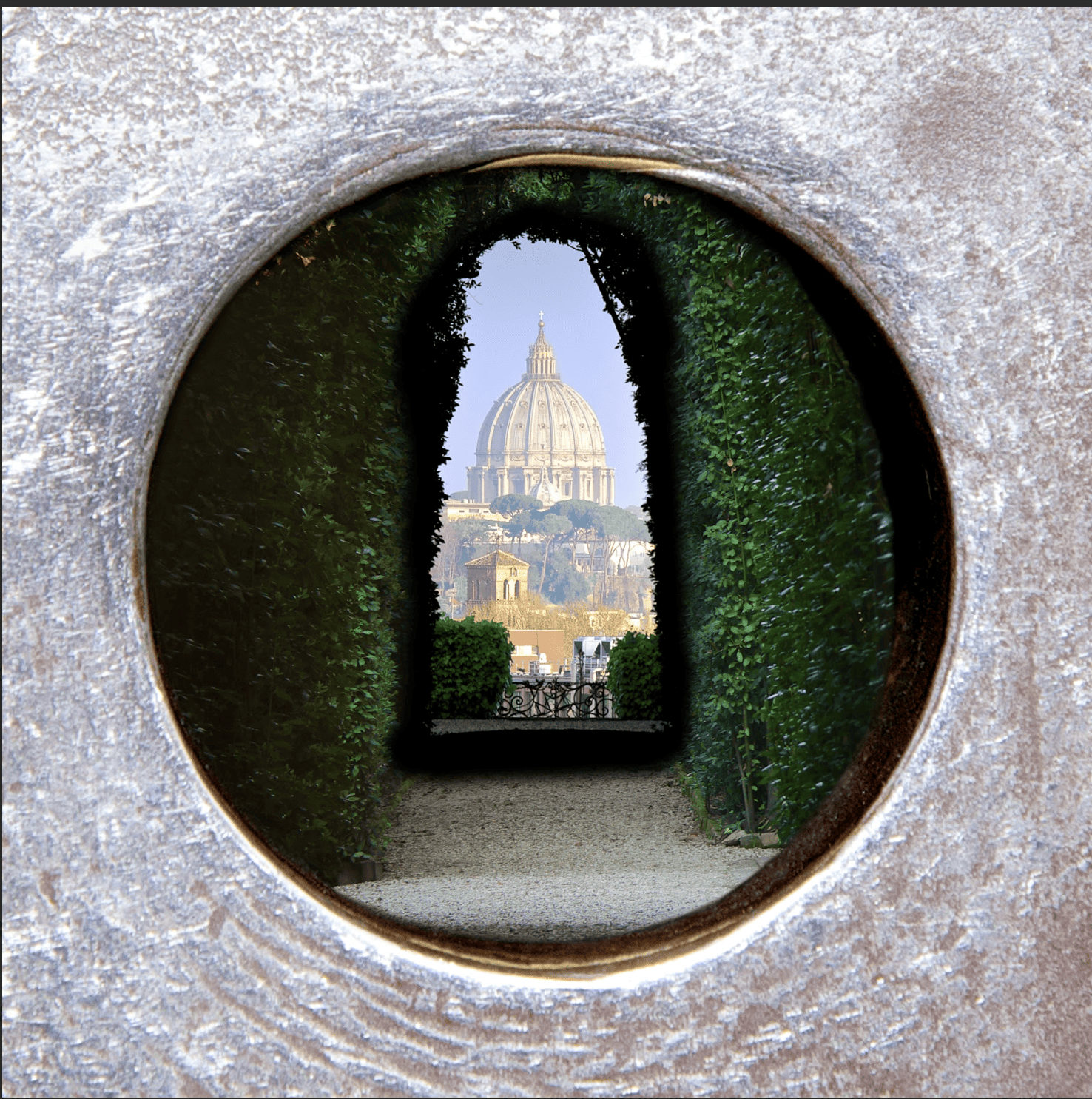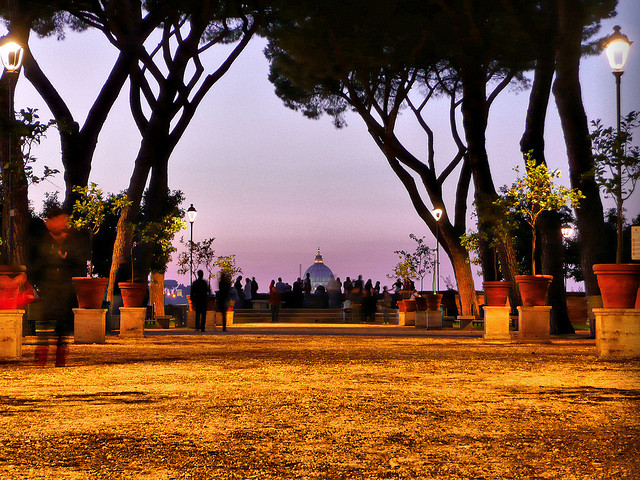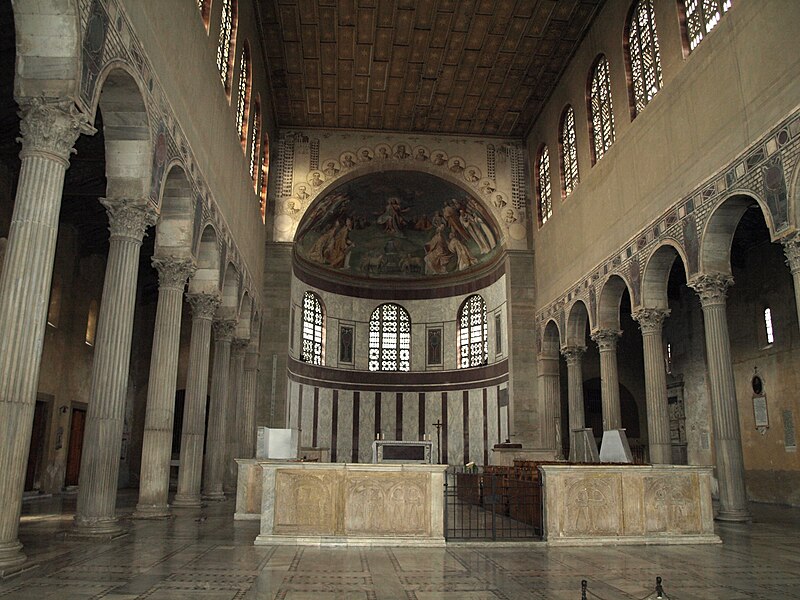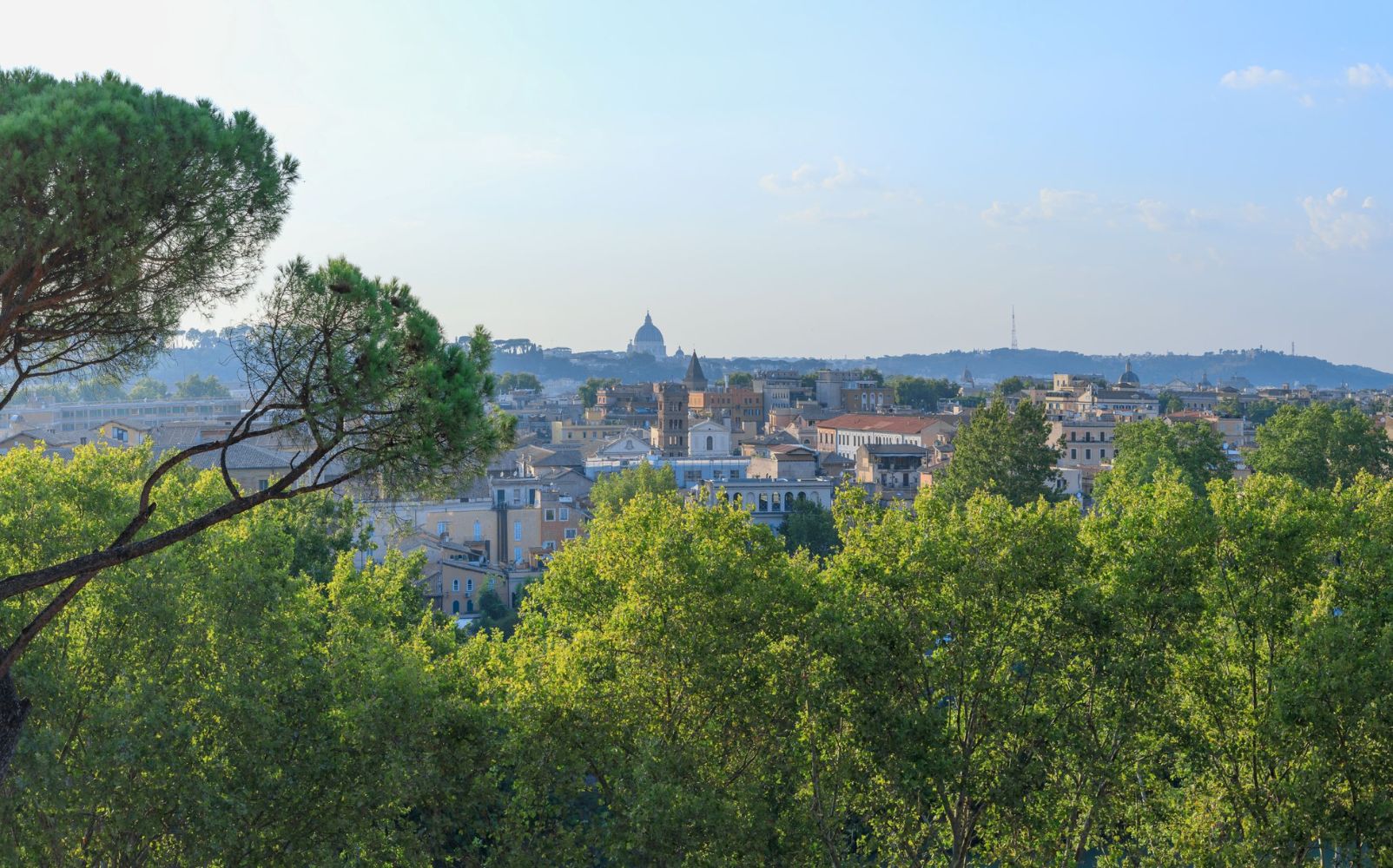A recommended walk – explore Rome by neighborhood (Quartieri di Roma)
If you’re looking for a Rome without crowds, with leafy paths, silence, and a touch of mystery – the Aventine Hill (Aventino) will be a true revelation. While most tours of Rome lead to the city’s busiest attractions, this hill remains a quiet retreat, inviting you to slow down and explore a different, more peaceful side of the Eternal City.
This is one of the most elegant and peaceful areas of the city, where embassy residences stand side by side with ancient basilicas, orange groves, and breathtaking panoramas. Here, antiquity and modern life exist in quiet harmony – far from the tourist noise.
Peek Through the Keyhole (Il Buco della Serratura)

At the Piazza of the Knights of Malta (Piazza dei Cavalieri di Malta), behind a large green door, lies one of the most mysterious places in Rome – a keyhole through which you can see the dome of St. Peter’s Basilica, perfectly framed by a cypress-lined path.
Unexpected fact: This view wasn’t a happy accident. According to legend, it was designed intentionally by architect Giovanni Battista Piranesi, a master of illusion and perspective. It’s a kind of “architectural joke” that became a legend. This hidden gem is often missed by classic itineraries but adds a magical stop to any Rome walking tour that goes beyond the usual landmarks.
The Orange Garden (Giardino degli Aranci)

Just two minutes from the keyhole is a serene orange grove with a panoramic terrace overlooking the Tiber River, Castel Sant’Angelo, and Rome’s skyline.
It’s considered one of the must see scenery in Rome area, especially at sunset, when the view takes on a golden, dreamlike quality.
Unexpected fact: According to tradition, one of the orange trees was planted by Saint Dominic in the 13th century. This tree, or perhaps its descendant, still blooms and bears fruit – and is considered the oldest orange tree in Rome.
Basilica of Santa Sabina

Next to the garden is an early Christian basilica from the 5th century. Modest from the outside, inside it offers a stunning atmosphere: ancient columns, white marble, and wooden doors with rare carved panels.
It’s the kind of hidden gem that makes Rome tours so unforgettable — blending sacred history with timeless art in a quiet, contemplative space.
Unexpected fact: One of those wooden panels features the earliest known depiction of the crucifixion of Christ in Christian art – dating back to around 430 AD.
The “Dog Dispute” Legend
Unexpected fact: According to an old local legend, the Aventine was once the scene of a strange dispute – over whether a nobleman’s beloved dog could be buried on sacred ground. This so-called “dog conflict” supposedly reflected the growing tension between patricians and plebeians.
Of course, it’s just a legend – but one that shows how the Aventine has always been home to curious and forgotten stories.
Why Visit the Aventine Hill
- Almost no tourists – it feels like a secret Rome
- Easily walkable from the Colosseum or Circus Maximus
- Perfect for a romantic stroll, photoshoot, or quiet escape
- Full of greenery, views, hidden gems, and curious tales
Ideal for a self guided walking tour of Rome, especially for those who enjoy discovering lesser-known corners of the city at their own pace.
Pro tip:
Combine your Aventine walk with a visit to the Baths of Caracalla, and then continue to the Testaccio district, where museums and authentic Roman trattorias await.
Want to hear more?
Love places like the Aventine? Discover more hidden corners of Rome in the WorldMuseum app.
